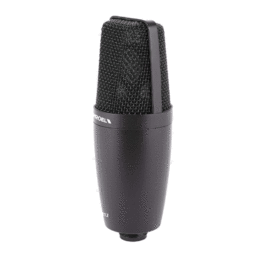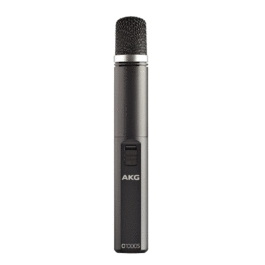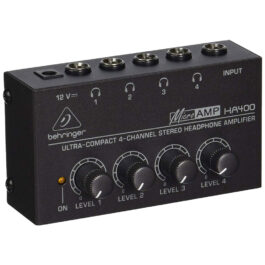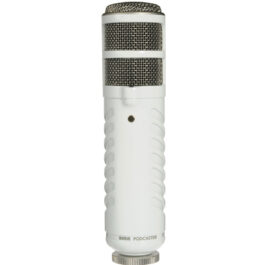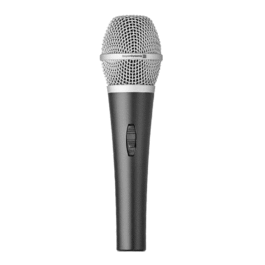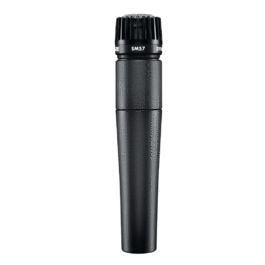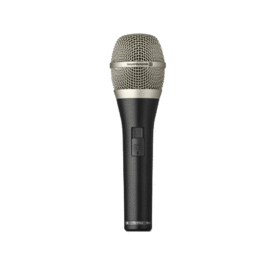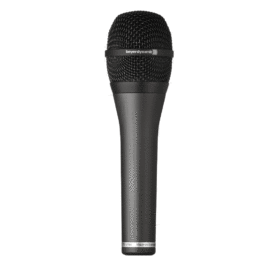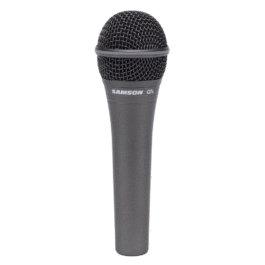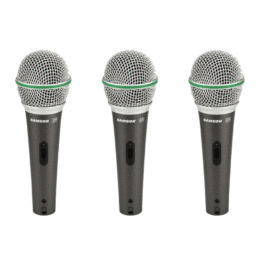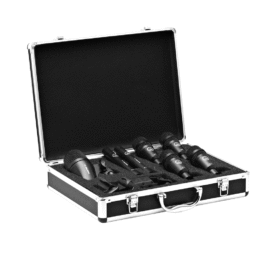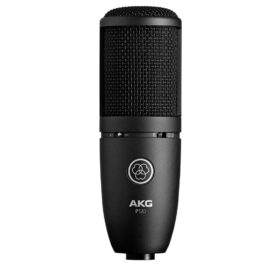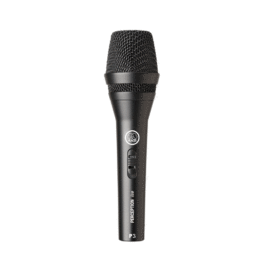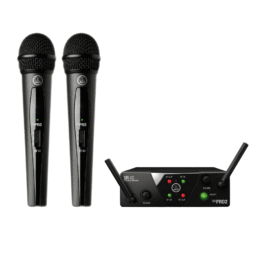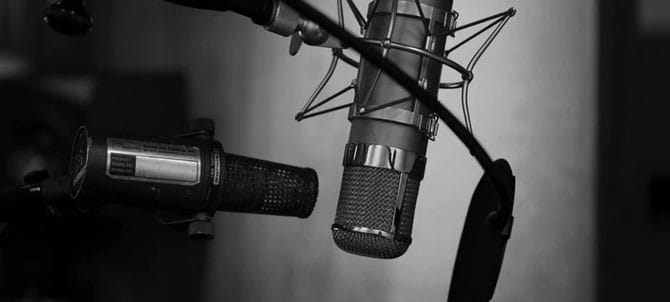
.
When it comes to microphones, it is imperative that you select the right microphone for the job. Using the wrong mic is like using a hammer to drive home a screw. Sure, you’ll get the job done, but it won’t be done well. Today, we’ll take a brief look at the differences between dynamic and condenser microphones.
Like with most tools, there is no one size fits all microphone you can use. Sure, there are a lot of versatile options that can work for a range of different applications, but if you want professional quality audio, then you need the right mic for the job.
The first thing you need to do when selecting a microphone is to establish what you want to use the mic for. This isn’t just a matter of deciding if you need a live performance mic or a studio mic. You should first determine whether you need an instrument mic, a drum mic, or a vocal mic. Now that you’ve done that let’s take a more in-depth look at condenser mics and dynamic microphones.
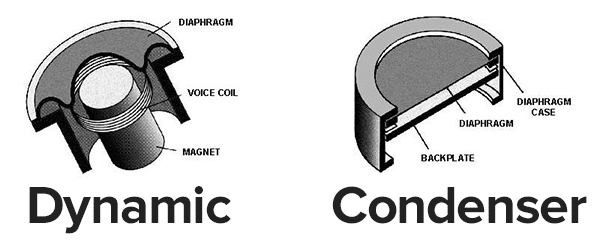
Image source: ledgernote.com
Condenser Microphones
Condenser microphones are best used to capture vocals and high frequencies. They are also the preferred type of microphone for most studio applications.
Also known as capacitor microphones, condenser mics are mainly used in studios because of their detail and accuracy. But how is this achieved? Condenser mics are constructed with a lightweight diaphragm which is suspended by a fixed plate. Sound waves cause pressure against the diaphragm, which causes it to move.
Because of the thin diaphragm and increased sensitivity, condenser mics are often used to pick up delicate sounds. They also need a power source. While this usually comes in the form of phantom power, it is not uncommon to use a 9v battery.
While condenser mics are great for capturing acoustic guitars, drum overheads, or vocals, they don’t often work well for louder sounds such as guitar or bass amplifiers. For purposes like these, dynamic microphones can be a better option.
Some of the condenser & recording microphones we stock...
-
Request Stock
- Out of Stock
- Studio & Recording, Recording Microphones
Proel CM12 Condenser Microphone
-
R1,995R1,495FREE DELIVERY - Select options
-
-
- Recording Microphones, Studio & Recording
AKG P220 Large Diaphragm Condenser Microphone
-
R6,295R4,720FREE DELIVERY - Select options
-
Request Stock
- Out of Stock
- Live Sound, Microphones, Studio & Recording, Recording Microphones
AKG C1000 S Mk4 Small-diaphragm Condenser Microphone
-
R5,995R4,195FREE DELIVERY - Select options
-
-
Request Stock
- Out of Stock
- Recording Microphones, Content Creation, Microphones for Video
Boya BY-PVM1000 XLR Shotgun Condenser Microphone
- R1,595FREE DELIVERY
- Select options
-
-
Request Stock
- Out of Stock
- Studio & Recording, Studio Mixing Desks, Recording Microphones
Behringer HA400 4-Channel Headphone Amp
-
R850R660FREE DELIVERY - Select options
-
-
- Studio & Recording, Recording Microphones, Content Creation, Microphones for Podcasting
Shure SM7B Dynamic Vocal Microphone
-
R12,825R10,484FREE DELIVERY - Select options
Dynamic Microphones
Dynamic microphones are best used for booming sounds or louder environments . Because of their ability to handle loud sounds and their decreased sensitivity, they are the preferred microphone for live use.
Unlike condensers microphones, a dynamic mic uses a wire coil to amplify signal picked up by the diaphragm. As a result, the output of a dynamic mic is lower than a condenser.
Another reason why dynamic microphones are great for live sound is that they are incredibly tough. While it’s not ideal to drop a microphone, if you drop your dynamic mic, you are far less likely to damage the mic than if you were to drop a condenser mic. Dynamic mics also don’t need batteries or phantom power, and usually, cost far less than condenser mics. A dynamic mic requires little to no maintenance, and if you practice a reasonable level of care, it will maintain its performance for a lifetime.
If you want to know more about what microphone is ideal for you, drop us a line and one of our studio specialists will get in touch.
Some of the dynamic microphones we stock...
-
Request Stock
- Out of Stock
- Live Sound, Microphones
Beyer Dynamic TGV35DS Vocal Microphone
-
R1,720R1,340FREE DELIVERY - Select options
-
-
Clearance Sale
- Live Sound, Microphones, Clearance Sale
Samson Q6 Dynamic Microphone
-
R1,095R765FREE DELIVERY - Select options
-
- Live Sound, Microphones
Shure SM57 Instrument Microphone
-
R2,899R2,499FREE DELIVERY - Select options
-
- Live Sound, Microphones
BeyerDynamic TGV50D Dynamic Cardiod Vocal Microphone
-
R4,090R3,190FREE DELIVERY - Select options
-
Request Stock
- Out of Stock
- Live Sound, Microphones
BeyerDynamic TGV70D Hypercardioid Microphone
-
R3,699R2,885FREE DELIVERY - Select options
-
-
Request Stock
- Out of Stock
- Live Sound, Microphones
Samson Q7X Dynamic Vocal Microphone
-
R1,595R1,115FREE DELIVERY - Select options
-
-
Request Stock
- Out of Stock
- Live Sound, Microphones
Samson Q6 Dynamic Microphone 3 Pack
-
R2,495R1,770FREE DELIVERY - Select options
-
-
- Live Sound, Microphones
AKG Drum Set Session 1 Drum Microphone Set
-
R11,899R9,370FREE DELIVERY - Select options
-
- Live Sound, Microphones
AKG P120 Recording Microphone
-
R3,795R2,785FREE DELIVERY - Select options
-
Request Stock
- Out of Stock
- Live Sound, Microphones
AKG P3S Dynamic Microphone
-
R1,495R1,045FREE DELIVERY - Select options
-
-
Request Stock
- Out of Stock
- Live Sound, Microphones
AKG WMS40 Wireless Mini Dual Instrumental Set – ISM2
-
R6,495R3,793FREE DELIVERY - Select options
-
-
- Live Sound, Microphones
AKG WMS40 Wireless Mini Dual Vocal Microphone Set – ISM2/3
-
R6,195R4,495FREE DELIVERY - Select options


